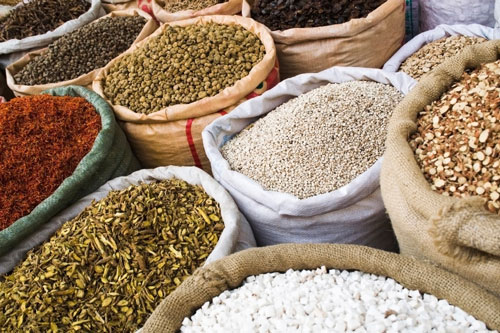Chinese Herbal Medicine Book Review

I enjoy collecting rare acupuncture, herbal medicine and other Chinese Medicine books. Thousand Formulas and Thousand Herbs of Traditional Chinese Medicine, Volume Two: Formulas is a very straightforward book. Published by Heilongjiang Education Press, this book features many formulas not covered in other English language herbal medicine books. In many ways this book is quite dry and yet that is exactly why I love it. It’s simple, straightforward and to the point. It is well organized and easy to use.
Each formula is presented with its English, pinyin and Chinese character name. The historical work where the formulas originated are given and each herb is listed in its English, pinyin and Chinese character form. Directions on preparation and usage are listed and the Traditional Chinese Medicine (TCM) functions and indications are also listed. In short, it is a large compendium with a wealth of very interesting and important formulas. It makes for a wonderful reference tool.
Let’s take a look at a formula presented in chapter 13, which is devoted to the presentation of blood disorders, Li Xue Ji. The formula Ning Xue Tang is translated as a Blood-Calming Decoction along with the presentation of its Chinese characters. Originally recorded in the Yi Fang Fa Hui, this formula lists the herbs and the corresponding dosages. The formula contains Xian He Cao, Ce Bai Ye, Han Lian Cao, E Jiao, Sheng Di Huang, Bai Mao Gen, Zhi Zi Tan, Bai Shao, Bai Ji and Bai Lian. The function is to cool Blood and stop bleeding. The indications are also listed: eye injuries due to trauma, retinal periphlebitis with continuous bleedings, red lips and cheeks, bitter taste, dry throat, vertigo, tinnitus and a feverish sensation.
The fonts and overall layout of each formula is clear and user friendly and the presentation of Ning Xue Tang is no exception. Simple and direct. That is exactly the type of layout necessary for making quick references in an acupuncture office. Many of the formulas in this book are not found in other popular works such as Bensky and Gamble’s Formulas & Strategies and Chen’s Chinese Herbal Formulas and Applications. The table of contents and indexes make for easy searching for herbs, formulas, differential diagnoses and diagnoses by biomedicine classifications.
The chief compilers were Huang Bingshan and Wang Yuxin. I met up with Prof. Huang Bingshan twenty years ago when he was presenting material from another work he had recently compiled with the help of consultants Prof. Steven Aung, professor of medicine at the University of Alberta (Canada) and Men Rui. That work was Syndromes of Traditional Chinese Medicine, Analysis of 338 Syndromes, another great book. At the time, he was the vice-president of the Heilongjiang College of Traditional Chinese Medicine and Prof. Huang’s joyful enthusiasm towards education, research and Chinese Medicine was inspiring. I recommend his herbal formula book for licensed acupuncturists interested in a continual expansion of their formula repertoire.
Let’s take a look at one more formula that can help to save the life of an expectant mother and her fetus. Gou Teng Tang is used for the treatment of convulsions during pregnancy due to Blood deficiency. Symptoms include sallow complexion, dizziness, tinnitus, and lower limb and facial edema during several months of the pregnancy. During convulsive attacks, there may be a sudden collapse, unconsciousness, seizures and sputum ‘roaring’ in the throat. The tongue is pale with little coating and the pulse is thin and rapid. The function of this formula is to nourish Blood and to stop internal Wind. The ingredients are Gou Teng, Dang Gui, Fu Shen, Ren Shen, Sang Ji Sheng and Jie Geng. Notably, the dosages are relatively normal in this formula except that Sang Ji Sheng has a high dosage of 30 grams. This formula first appeared in the Fu Ren Da Quan Liang Fang and represents a very elegant and gentle solution to a potentially dangerous medical condition. That’s why I love this book and others like it.
On a side note, Gou Teng can also be used in Chinese Medicine dietetics. In herbal formulas, we decoct Gou Teng to concentrate its power. In dietetic soups, by contrast, we add Gou Teng after the soup has been prepared and let it steep. This imparts a gentle function of quelling pathological Wind to the soup while not spoiling the flavor. Just recently, Prof. Jeffrey Pang, L.Ac. and I went over a simple recipe using this technique in an online dietetics webinar for acupuncture continuing education CEUs and PDAs. We will release new anytime acupuncture continuing education videos in the coming year featuring cooking with Gou Teng for the control of internal Wind disorders. Look for our new dietetics online instant videos and live webinars in the coming months to learn more.


